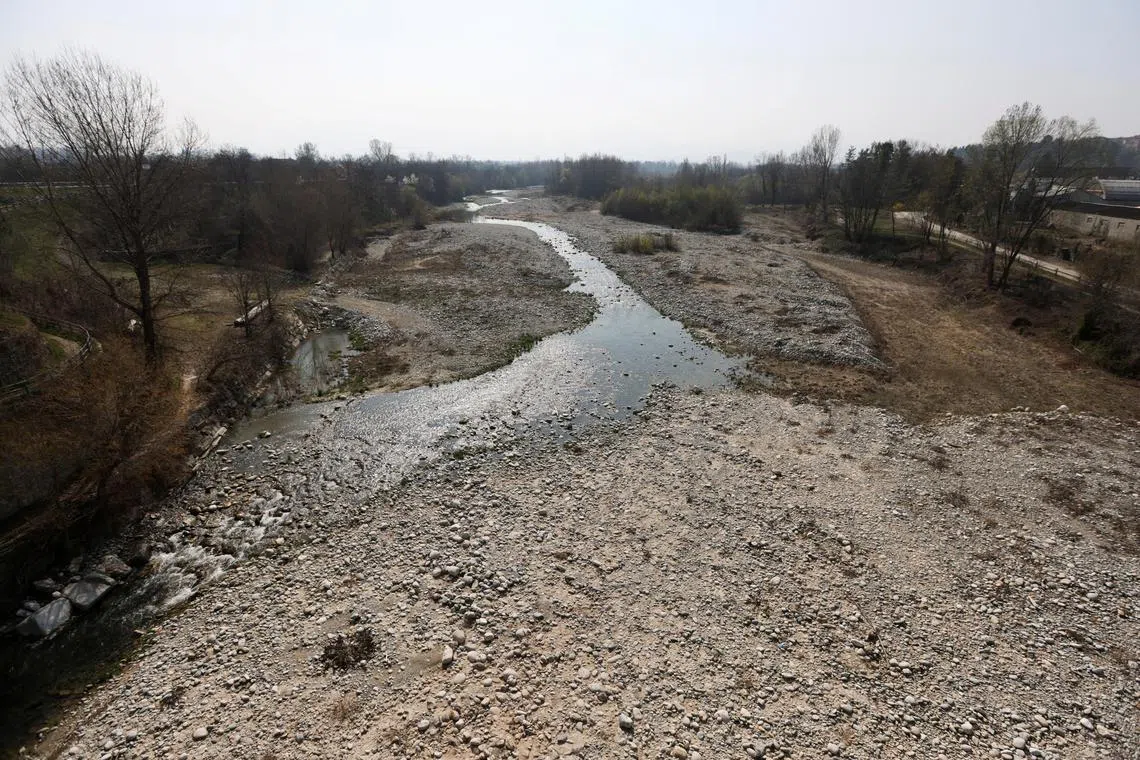Italy to cut rice output as drought looms for second year
Sign up now: Get ST's newsletters delivered to your inbox

Soil moisture levels have still not recovered from last year’s drought.
PHOTO: REUTERS
Follow topic:
Lombardy, MILAN – Italian rice output is set to fall in 2023 as farmers facing a second year of drought reduce the land dedicated to the crop to the lowest in more than two decades, agricultural groups warn.
Italy cultivates about 50 per cent of the rice produced in the European Union and is the world’s only grower of types most suitable for risotto, such as Arborio and Carnaroli.
About 94 per cent of Italy’s crop is grown in the northern regions of Lombardy, around Milan, and Piedmont, around Turin.
Dr Roberto Magnaghi, director-general of Ente Nazionale Risi, a public rice research body, told Reuters no more than 211,000ha will be sown with rice in 2023, the smallest area in 23 years.
“Water is scarce. We are all looking up at the sky,” he said.
The 2023 estimate is down by 7,400ha from 2022 and by 16,000 compared with 2021.
Agricultural lobby Coldiretti made a similar estimate.
Dr Magnaghi said the outlook in Lombardy and Piedmont is even bleaker than in 2022, when crops were wrecked by drought and production was down 17 per cent from the year before.
In Lombardy’s Pavia province, famous for its risotto rice, output fell 16 per cent. still not recovered from 2022’s drought
Soil moisture levels have
“It will be hard to fill the shortfall we have with spring rainfalls,” he said.
Scientists and environmental groups sounded the alarm about Italian water shortages in January after the sharp drop in winter snowfall.
Prime Minister Giorgia Meloni told Parliament on Tuesday that she was working with the regional and city authorities on a “national water plan” to improve infrastructures with new technologies and raise public awareness on the need to save water.
Rice, introduced in Italy in the second half of the 15th century, is one of the most water-intensive crops, with between 3,000 and 10,000 litres of water needed to obtain a kilogram of output, depending on varieties and other conditions.
The sowing season starts in April, when farmers plant seeds in pools 30cm to 40cm deep. These must then be constantly irrigated to keep the upcoming sprouts underwater.
Coldiretti is lobbying the government to boost reservoir capacity, its head of economics Lorenzo Codogno told Reuters, adding that Italy manages to collect just 11 per cent of its rainwater.
With climate change bringing increasingly frequent droughts, Italy is also seeking other solutions to safeguard its rice production.
The southern island of Sicily, which abandoned rice production a century ago, began growing it again in 2016 with small-scale cultivations using innovative techniques that need far less water than those traditionally used in the north.
Dr Magnaghi, of Ente Nazionale Risi, said research was also under way to create new rice varieties more resistant to drought, but this is hampered by EU legislation limiting genetically modified crops.
“With traditional methods it takes years to create new varieties,” he said. REUTERS

